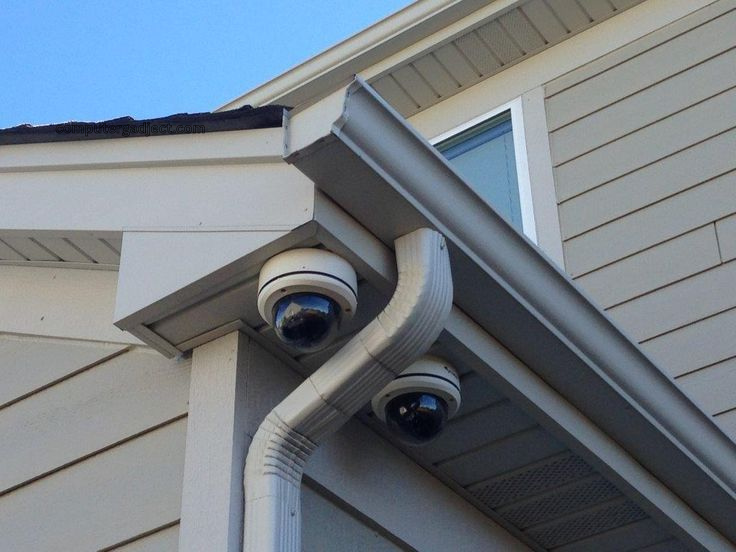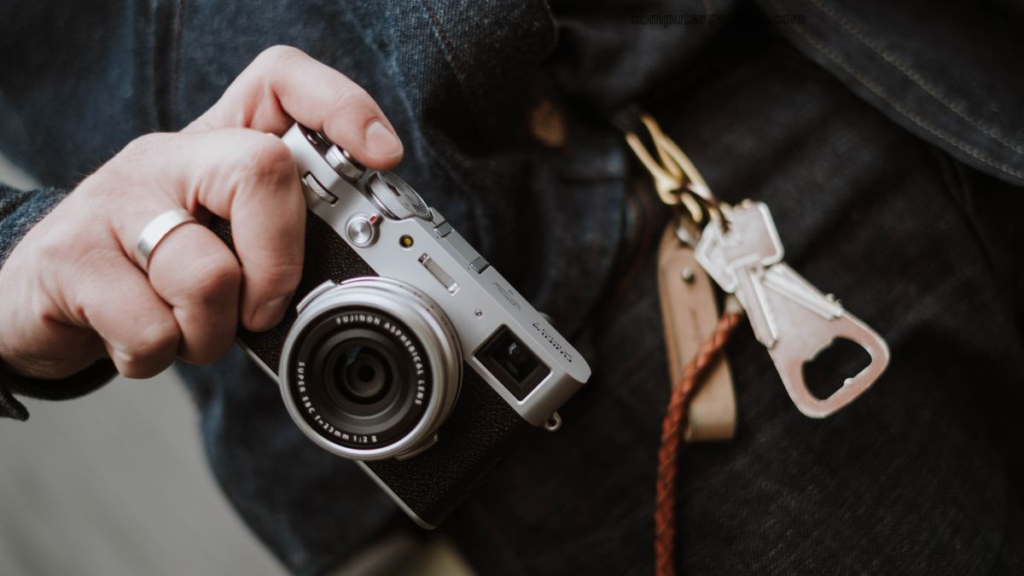The Security Camera Placement Tool helps determine the ideal location to install surveillance cameras. It considers various factors, such as the layout of the area and potential blind spots, to ensure maximum coverage and security.
As demand for security cameras grows in residential and commercial settings, it is essential to ensure they are strategically placed to provide maximum protection. The Security Camera Placement Tool offers a solution to this challenge. Using advanced technology and algorithms, the tool analyzes various factors, such as the size and layout of the area, potential entry points, and lighting conditions, to determine the best location for surveillance cameras.
With this tool, users can ensure that their investment in security cameras is used optimally to secure their properties and belongings.
The Importance Of Surveillance In Security
Surveillance is one of the most effective measures to ensure security and deter and prevent possible criminal activities in your environment. To this end, the security camera placement tool comes in handy, helping you determine the best location for your surveillance cameras.
Protecting Your Property
The primary purpose of security cameras is to protect your property by providing surveillance over your assets. This may include your home, business premises, or any other property you own. By using surveillance cameras, you can capture any unauthorized access to your property, day or night. This way, you can protect your property from theft and other forms of vandalism. The best part is that security camera installation is affordable and requires minimal maintenance.
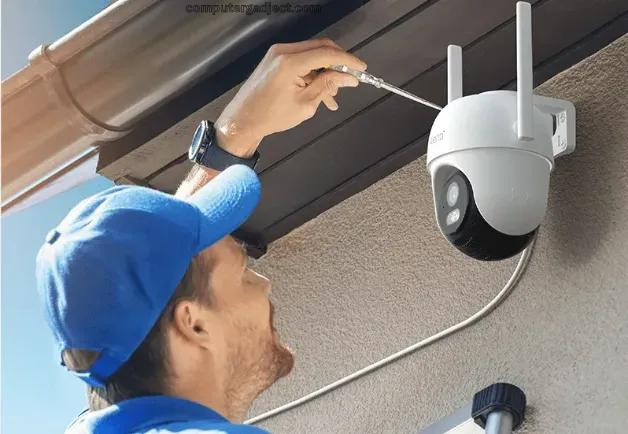
Preventing Crime
Surveillance cameras installed in the right places can prevent crimes from occurring. Potential criminals tend to stay away from places that are under surveillance because they know their actions may be recorded. This sense of fear often deters crime in areas under surveillance. With the security camera placement tool, you can identify blind spots and place your cameras strategically, where they can capture every corner of your property.
Summary
1. Surveillance cameras are essential to protect your property and prevent crime.
2. The security camera placement tool helps you place your cameras strategically for maximum coverage.
3. Having surveillance cameras installed can give you peace of mind that your property is safe and secure.
Installing a surveillance system on your property is a worthwhile investment. It gives you a sense of security and plays a vital role in preventing crime and protecting your property. Use the security camera placement tool to ensure you get the most effective surveillance system configured for your particular needs.
Understanding Security Camera Placement
Choosing the correct security camera location is crucial to installing a security system. A properly placed camera can help you deter crime, catch perpetrators, and ensure the safety of your property. Before installing a security camera, it is essential to understand the factors that affect its location. In this article, we will discuss some of the considerations you should make when placing your cameras.
The Role Of Lighting
Lighting is one of the most important factors when placing a security camera. A well-lit environment makes it easier to capture clear, detailed images. On the other hand, a poorly lit area can result in more precise and grainy images that are of little use for research purposes.
When placing cameras indoors, ensure they are near a good natural light source or in well-lit areas. Outdoors, make sure your cameras are placed where they are protected from direct sunlight and not pointed directly at the sun. Consider using cameras with night vision capabilities if it is a low-light area.
Coverage Area Considerations
Another critical consideration when placing a security camera is the coverage area it needs to monitor. You must evaluate which areas you want to monitor and ensure your camera placement provides maximum coverage. You should also consider the angle and position of the camera to ensure it can capture a clear view of the area.
It is important to avoid placing cameras too high or too low to the ground, as this can interfere with camera coverage. You should also ensure no obstructions, such as trees, bushes, or other objects, could block the camera’s view. If you need help determining the best location, consider using a security camera location tool.
Conclusion
By considering these factors when placing your security cameras, you can ensure optimal coverage that will help you keep your property and loved ones safe. Remember to consider the role of lighting and coverage area considerations when selecting the perfect location for your security cameras.
Factors To Consider Before Placing A Security Camera
If you want to set up a security camera to keep your home or business safe, knowing where to place it is essential. Choosing the right location can maximize the camera’s potential and significantly improve your security system. However, several factors must be considered before deciding on a placement. This post will discuss the critical factors before setting up your camera.
Target Area
The first factor to consider is the target area. Before deciding on camera placement, you must identify the places you want to monitor. This could include your front door, backyard, or garage. If this is a business, you should focus on the cash register or the entrance. When determining the target area, consider indoor and outdoor locations.
Once you have identified the specific areas you want to monitor, you can choose the ideal place to place the camera to capture the best view.
Weather Conditions And Environment
Another crucial factor you should consider is the weather conditions and the environment where the camera is placed. Weather can affect the camera’s visibility, so choose a location that can withstand adverse weather conditions.
You should also consider environmental factors affecting the camera, such as dust, humidity, and temperature. For example, if you place the camera in a high-humidity area, you must ensure it is secured in the correct enclosure to prevent moisture damage.
Additionally, it is essential to avoid placing the camera in areas where it could easily be vandalized or tampered with, such as within arm’s reach or behind a bush or tree.
By considering all of these unique environmental factors, you can optimize the performance and longevity of your security camera.
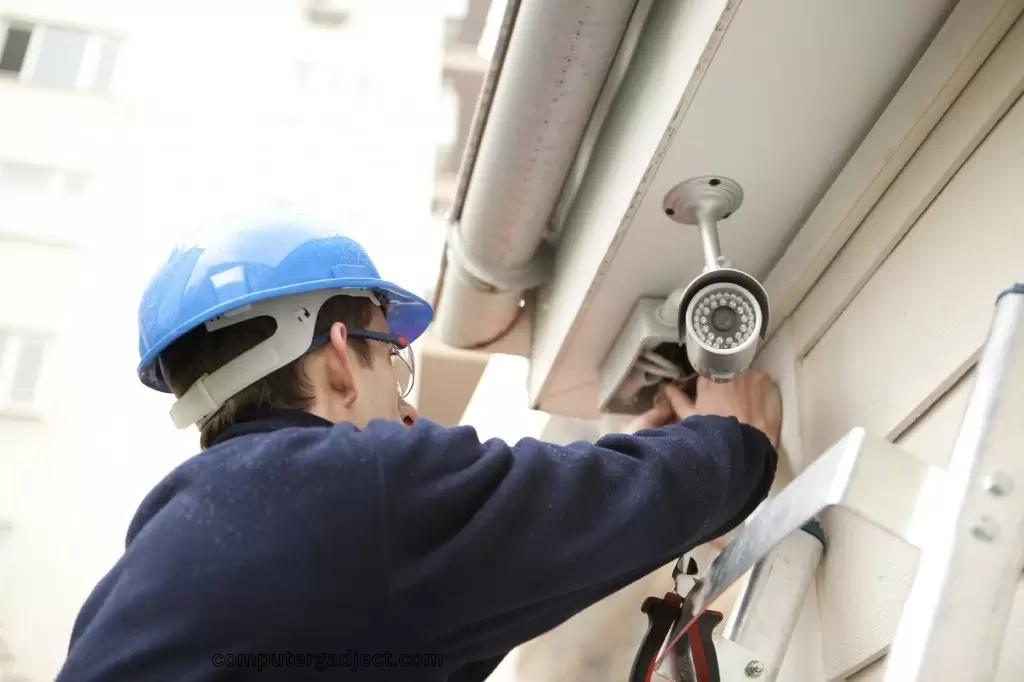
Types Of Security Cameras
Choosing the right security camera may seem daunting, but with a little knowledge about the different types available, you will be able to make a more informed decision. There are two main types of security cameras: indoor and outdoor cameras. Each has a different purpose and should be strategically placed for maximum effectiveness.
Indoor Cameras
Indoor cameras are designed to capture activity occurring inside a building. They are great for keeping an eye on pets, children, and employees and monitoring for suspicious activity. Indoor cameras come in many different styles and types:
1. Dome Cameras: These cameras are discreet and can be mounted on the ceiling or wall, making them a popular choice for businesses and homes. They provide 360-degree coverage and are challenging to manipulate.
2.Cubic cameras: These cameras are small and compact and can be easily placed on surfaces. They are good for monitoring small spaces or for use as hidden cameras.
3. Fisheye Cameras – These cameras provide a wide-angle view, giving you a complete picture of the room. They are great for large spaces and can eliminate the need for multiple cameras.
Outdoor Cameras
Exterior cameras are designed to capture activity occurring outside a building. They are great for deterring theft, monitoring suspicious activity, and keeping an eye on your property. Outdoor cameras come in many different styles and types:
1. Bullet cameras are long and cylindrical, making them easy to spot. They are suitable for monitoring large areas and can be used indoors or outdoors. Bullet cameras are typically weatherproof and durable.
2. Dome Cameras: These cameras are similar to indoor dome cameras but are designed to be weatherproof and durable. They are typically used in outdoor areas where vandalism or theft may occur.
3. PTZ Cameras: PTZ stands for pan, tilt and zoom, which means you can control the direction and zoom of the camera. These cameras are ideal for large outdoor areas where a particular location needs to be monitored.
Choosing The Right Security Camera For Your Needs
Choosing the right security camera for your needs can be daunting. With so many options on the market, it’s easy to feel overwhelmed. However, with the correct information, you can make an informed decision that will keep your home or business safe and secure.
Resolution
The resolution is one of the first things to consider when choosing the right security camera.
1. A higher resolution camera will provide more detail and clarity in the footage.
2. Generally speaking, a resolution of 1080p or higher is recommended for home security cameras.
3. For businesses or high-security areas, a resolution of 4K or higher may be necessary.
Night Vision
Another essential factor to consider is night vision.
1. Low-light areas need security cameras that can capture images in the dark without losing visibility.
2. Look for cameras with infrared lights that provide clear images in low-light conditions.
3. Most cameras range from 10 to 100 feet for clear night vision.
Conclusion
Make a detailed list of your requirements and budget, then discuss the different security cameras that meet your needs. Whether you’re looking to keep your home safe or monitor your business, choosing the right security camera is essential. Consider the resolution, night vision, and features of different cameras to find the one that best suits your needs.
Benefits Of Using A Security Camera Placement Tool
A security camera placement tool offers several benefits. It helps identify suitable areas to install surveillance cameras, minimize blind spots, and improve overall safety by providing greater visibility. With quick and easy installation, it’s a must-have for anyone looking to upgrade their security system.
As a business owner, the security of your property is of the utmost importance. One of the best ways to ensure this is by using a security camera system. However, it’s not just about buying suitable cameras; it’s also about where you place them. This is where a security camera placement tool comes in handy. Below are some benefits of using a security camera placement tool.
Accuracy
The security camera location tool ensures the most accurate location for your cameras. It takes into account various factors such as field of view, distance, angle, and lighting to suggest the best position for the camera. With this tool, you can be sure that your cameras will capture the right areas and provide maximum coverage.
Time And Cost-efficiency
Gone are the days when you had to spend hours pondering the correct position for your cameras. With a security camera placement tool, you can save time and effort. The tool provides instant location suggestions, eliminating the need for trial and error. Plus, it saves you money in the long run by ensuring you get the most optimal coverage without spending money on additional cameras. Using a security camera placement tool offers many benefits, including accuracy, time, and cost-effectiveness. With the right location, you can keep your business secure 24/7.
Best Practices For Installing A Security Camera
When installing a security camera, the location is essential, as it can affect its effectiveness. Use a security camera placement tool to find the camera’s optimal position, ensuring that obstructions are avoided and that all necessary areas are covered.
Installing security cameras throughout your home or business can be crucial in protecting your property and your loved ones. However, security cameras will only be effective if they are placed in the right place and installed correctly. In this article, we’ll discuss best practices for installing a security camera and explore how to avoid common mistakes that could compromise security.
Avoiding Blind Spots
When installing security cameras, it is essential to avoid blind spots. Blind spots are areas that are not covered by the view of your security camera and can leave your property vulnerable to theft or break-ins. To avoid blind spots, conduct a thorough study of your property and identify areas that require more coverage. Generally, you’ll want to focus on entry points, such as doors and windows, and the high-traffic regions where intruders are likely to pass through, such as hallways or stairwells.
Securing Wiring
Once you have identified the areas where you want to install your security cameras, it is time to do the wiring. While wireless cameras are gaining popularity, most cameras still require some wiring, and it is essential to ensure that this wiring is secure and hidden from view. Be sure to use high-quality wiring and hide it as much as possible. Exposed wiring can be a temptation for thieves, as it can provide clues as to where your cameras are located and make it easier for them to disable or damage your system.
Conclusion
By following these best practices, you can ensure that your security cameras are installed as effectively as possible, giving you peace of mind that your property is safe. Remember to periodically check and maintain your cameras to ensure they are working correctly and make any necessary adjustments to your system as your security needs change over time.
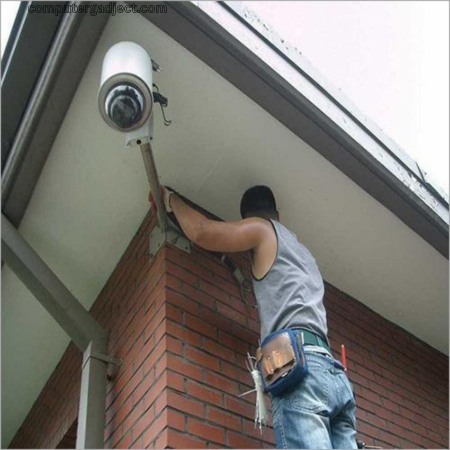
Maintaining Your Security Camera System
Maintaining your security camera system is essential to ensure its functionality. An important aspect is choosing the right security camera placement tool, which will help you determine the best position for your cameras to cover the most vulnerable areas.
Maintaining Your Security Camera System Installing a security camera system is one of the best ways to protect your property, but it’s important to remember that it needs regular maintenance. Proper care ensures that your security camera system works optimally and lasts long. This blog post discusses two fundamental methods for maintaining your security camera system: regular cleaning, maintenance, and upgrading or replacing equipment.
Regular Cleaning And Maintenance
Regular cleaning and maintenance are essential for your security camera system’s longevity and optimal performance. It is necessary to clean the cameras regularly and inspect them for any problems. Dust and debris can build up on the camera lens, blocking visibility and reducing the camera’s effectiveness, so removing any dirt or debris is vital. Proper cleaning involves using a soft cloth to wipe the outside of the camera. Make sure the fabric is dry, as moisture can damage the camera. Inspecting the camera for warning signs, such as loose cables, physical damage, or equipment malfunctions, is also essential. Regular maintenance also includes periodically testing the functionality of your security camera system. This involves checking camera angles, lighting conditions, and footage quality. Regularly check the storage capacity of your security camera system, as a full memory card can result in the loss of critical footage.
Upgrading And Replacing Equipment
Technology advances rapidly, and updating your security camera system can help you stay current. Upgrading your equipment can improve the functionality of your system and increase its lifespan. Replacing your cameras with newer models can help you use new features like more precise image quality, enhanced night vision, and wider viewing angles. When replacing or upgrading your security camera system, be sure to purchase new cameras that are compatible with your existing system. Older models may not be compatible with your current system or have different requirements, such as power supply. Conclusion Maintaining your security camera system is crucial to ensure optimal system performance and increase lifespan. Keeping your system clean and functional with ongoing maintenance is essential, as is upgrading or replacing equipment when necessary. With proper care, your security camera system can continue to protect you and your property for many years.
Frequently Asked Questions Of Security Camera Placement Tool
How Do I Know Where To Put My Security Camera?
Consider the areas you want to monitor outside and inside your property. Identify entry and exit points, high-risk areas, and blind spots. Make sure the camera angle and location provide clear, high-quality images. Do not install cameras in private spaces such as bathrooms or bedrooms.
Mount them high enough to prevent tampering or damage.
How Do You Layout A Security Camera?
To design a security camera, follow these 5 guidelines: 1. Determine the areas you want to monitor 2. Choose the correct type of camera for the location and lighting conditions 3. Place the camera at the proper angle and height 4.
Consider the camera’s field of view. 5. Ensure proper wiring and installation and test camera functionality.
Where Not To Install Security Cameras?
Avoid installing security cameras in private spaces such as bathrooms, bedrooms, and locker rooms. It is also best not to install them in areas where people have a reasonable expectation of privacy, such as employee break rooms.
How Do You Mount A Security Camera?
To mount a security camera:
- Choose a location that provides a clear view of the area you want to monitor.
- Place the camera at a height that lets you easily capture the activity.
- Use the screws and brackets provided with the camera to secure it to the surface.
Adjust the angle and focus of the camera and connect it to power and a recording system.
Conclusion
The security camera placement tool is essential for any business or homeowner looking to improve their security measures. By understanding angle, lighting and coverage requirements, you can optimize the placement of your cameras for maximum security.
With the right tools and knowledge, you can protect your property and assets from theft, vandalism, and other criminal activity. Invest in a security camera placement tool today to protect your property from threats.

